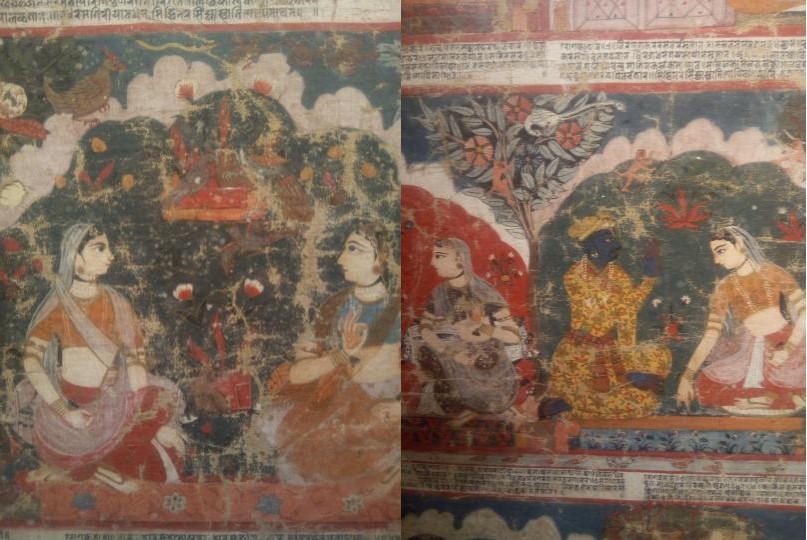Kritika Verma
This Article is the second part of research on 17th Century Krishna Leela’s painting; it illustrates the text of devotional songs, a genre known as Krishnalila. The first part of this Article: The Hidden Metaphors in the 17th Century Krishna Leela Painting from Nepal
A third aspect of reading and separating an entirely different kind of metaphor from this painting is when one relates it with the famous 15th-century and later medieval Indian literature and poetries. Keshav Das’s Rasikapriya, Bhanudatta’s Rsamanjari, Kavipriya and Nayaka-Nayika Bheda. Expect for Nayak-Nayika, mentioned in the third chapter of Natyashastra, written in the 2nd century A.D. all others are written in or after the 15th century. What do we find familiar in all these texts, and how are they even related to Krishnalila’s painting in Lalitpur?
The term Nayika was a creation of Bharatmuni in the 2nd century the author of Natyashastra. The term Nayika is used not literally to mean Heroine, but for passionate and devoted lover in Indian art who represents various shades of love, love in union and love in separation. The renowned exponent deals primarily with dance–drama or Natya. “Natyashastra is acclaimed as a first authorized treatise for Indian poetics” (99). The foundation of the literary tradition of analyzing and classifying the emotional states of men and women in love with zest and precision. What is referred to as Nayaka and Nayika were laid down by Bharata Muni and were continued by his descendants in a well-defined approach. The later texts identified surprisingly many more. And whether it is the Natyashastra or the Kavyasastras, one can perceive an exciting fact that Nayika was a purely male point of view discussed only by the men. “Males wrote all these shastras” (Phadke). Several pieces of literature talk about Nayika’s classification. Bharata also gave “a subtle classification of women according to their mood, sentiment and situation called Nayika -Bheda” (Randhawa and Bhambri vii). “Total 144 types of Nayaka and 384 types of Nayikas have been stated in the Natyashastra” (Dwivedi 322-330). “Rasamanjari of Bhanu Misra, a work which attempted to harmonize all the prevalent typologies of Nayika, also came up with 384 possible kinds of Nayikas” (Hawley et al. 91). But “with permutations and combinations, Nayika-Bheda came to 128 types of heroines” (Mehta 105). Later on, the number of Nayikas was reduced to eight, and this figure occupied considerably more space than the hero or Nayaka in dramaturgical and erotic literature. The same classification continued to be followed by his successors, such as Vatsyayana in his Kamasutra (Datta 1203).
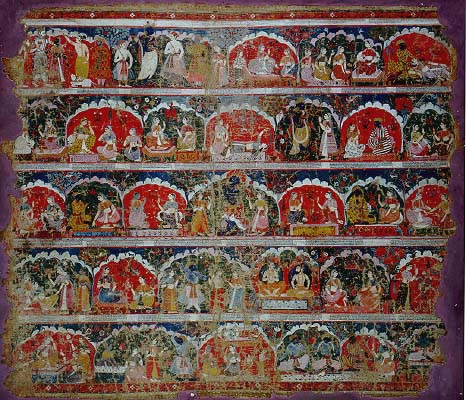
Similarly, in Jayadeva’s Gita Govinda, Krishna is the Nayaka while Radha is the Nayika, and both are well-known for their passion and love. Each psychological state of Nayika can be identified in the text by Jayadeva that elaborates on the eight moods of the Heroine concerning its technical name or its characteristic sign or symbol. Poets of later medieval literature, such as Bhanudatta, who wrote the Rasamanjari and Keshavadasa, who wrote Rasikapriya elaborated on the Ashtanayika theme giving a new direction to the literature talking about Nayika-Bheda. These two literatures considered ageless standard texts, raised plentiful romantic situations to be imagined by the artists and thus provided an immense number of paintings containing the theme of love. Bhanudatta followed the tradition of romantic and erotic poetry on the Nayaka, flattering the Nayika, and the couple was imagined as Radha and Krishna. Also, the introduction of Rasamanjari of Bhanudatta proceeded and acted in many ways as a significant turning point in the classification of Nayakas and Nayikas because no author before him exclusively wrote a treatise dealing with only the classification of Nayakas and Nayikas. “In Rasamanjari, the subject of Nayika-Bheda is treated for its own sake for the first time in Indian literature, which has a unique place in Sanskrit love poetry” (Randhawa and Bhambri, Bashohli Paintings vii).
This Article is the second part of research on 17th Century Krishna Leela’s painting; it illustrates the text of devotional songs, a genre known as Krishnalila. The first part of this Article: The Hidden Metaphors in the 17th Century Krishna Leela Painting from Nepal
Similarly, Keshavadasa’s Rasikapriya is the most critical work in dialect literature with poetic quality, as several Rajasthani and Pahari miniatures illustrate its verses. “And thus most of Nayaka-Nayika-Bheda paintings of Rajasthan are based on the poetry of Keshavadasa” (Misra 18). “Bihari borrowed the matter of Nayika-Bheda from the secular traditions of Dasarupaka and Sahitya Darpana and above all Kamasutra of Vatsayana” (Sarma 30). Moreover, thus, Bihari’s Satsai contains many couplets with a love theme, offering a visual picture of a Nayaka and Nayika in various situations, whether the separation or the union with a lover.
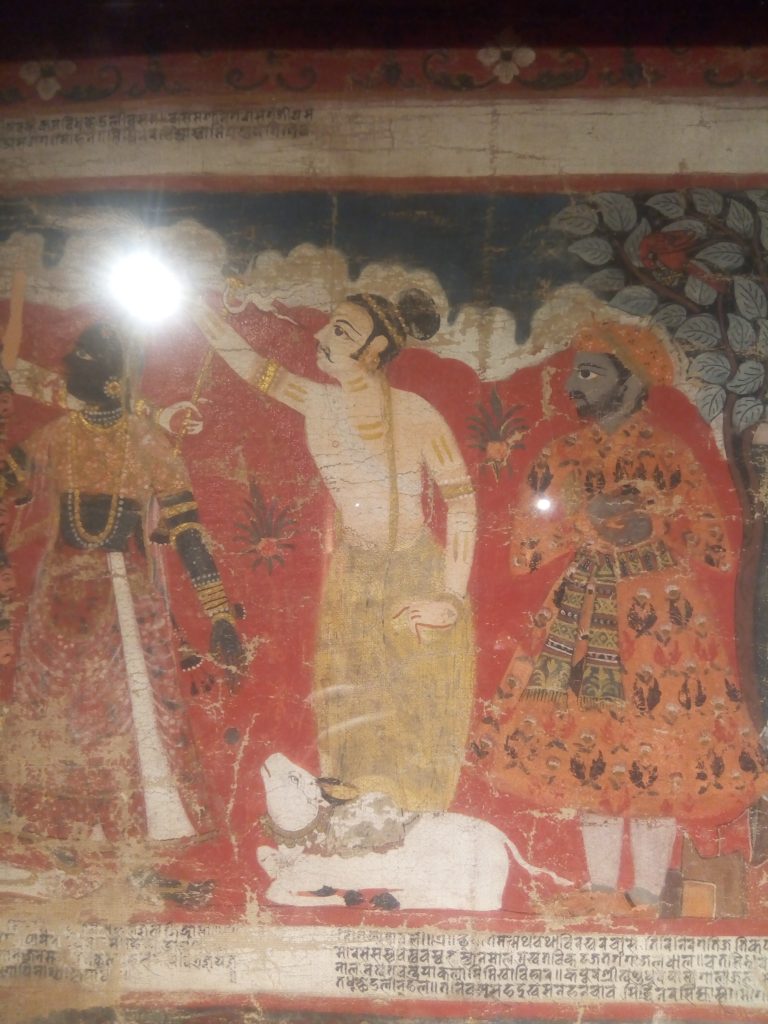
The different feelings of the young woman, marked on the one hand by overpowering passion and on the other by shyness, have awestruck several Indian poets and painters. Works like Bhanudatta’s Rasamanjari and Keshavadasa’s Rasikapriya and Kavipriya “were gold mines for painters who appreciated graphic descriptions of Krishna and Radha whose endearing divine qualities were fashioned after familiar human likenesses” (Women in Love- Love Paintings). The emotions that the varying seasons bring to lovers’ minds are described with great warmth and tenderness in poetry and painting. The paintings are thus illustrated with lyrical compassion, delicate and graceful draughtsman ship and colours of extraordinary richness.
The theme of love treated and discussed in Indian art reflects the synchronization of the philosophy of life. Moreover, one can hear and feel the echoes of Nayika’s heart in pain, sadly in himself, as ultimately, she is an example of the constant search of a human for divine and inspirational love throughout the Indian tradition. The literature analyzed the real feelings of love and organized the central character Nayika based on her relation to the lover, her passion and power and her depth of love, expression and experience into various types. These typologies or categories were given appropriate names. Thus a categorization of Nayikas emerged through the literature based on their birth, physical and sexual characteristics, behaviour and their response to love, age, nature and jealousy.
Before moving on to Krishnalila’s painting of Lalitpur, I would like to classify the types of Nayika and their description that we find in Krishnalila.
“Sanskrit scholars like Bharata, Keshavadasa, Dhanamjaya and many more have classified Nayikas finally according to Situations as being of eight types” (Bahadur, The Rasikapriya xxiii-xxiv):
Vasakasajjika – She is the one who embellishes herself for the union and her surroundings for her lover’s arrival to create an enjoyable environment around him.
Virahotkanthita – She is the one who is alone and desires reunion as she is separated from her lover and thus distressed.
Svadhinapatika – She is the one who is swollen with pride in her beloved’s love and devotion.
Kalahantarita is the one who is regretful of her impulsiveness in conflict with her lover, which has resulted in their separation.
Khandita – She is the one whose lover had disappointed and saddened her, which made her upset and offended.
Vipralabdha – She is the one who is frustrated that her lover has not turned up at the meeting place as he assured her of the reunion.
Proshitapathika – She is the one who is missing her beloved as he is far away on a long journey which is the reason behind her anguish and grief.
Abhisarika – She is the one who courageously goes out for the meeting with her lover.
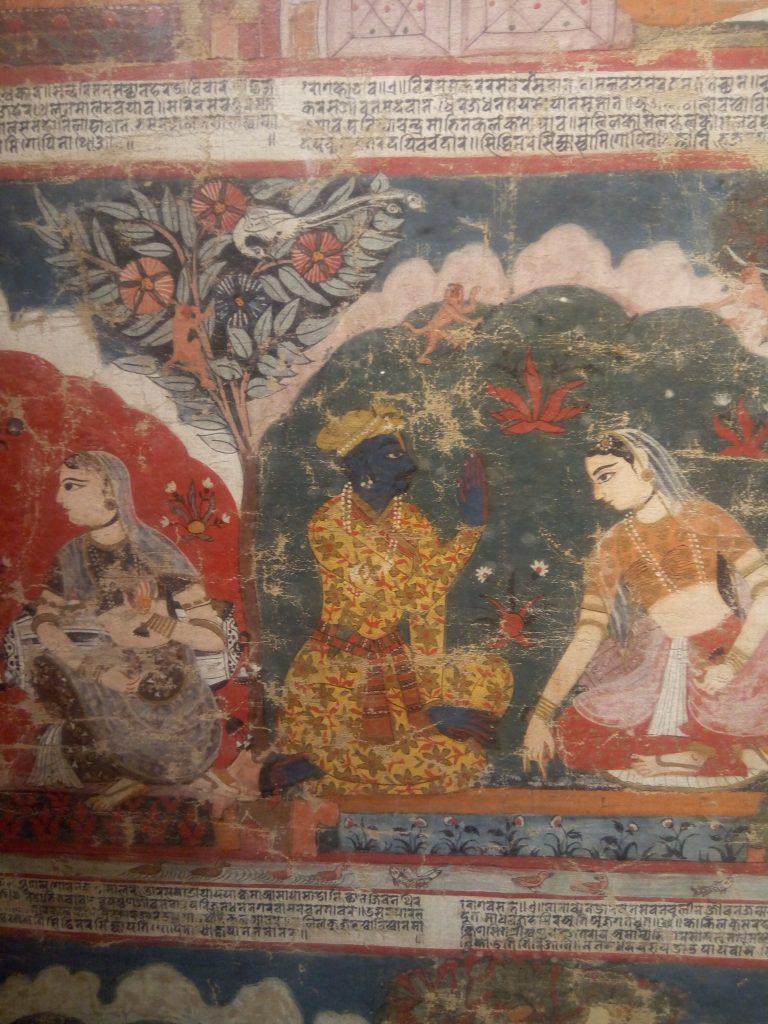
As we have seen, the speaker’s statements in the poem are one or more Gopis, except for song 23, in which the speaker is a man. In every scene except the first one, they are described in diverse phases of love. The manner long practised in classical Indian poetry a taken over by Nepalese and Indian miniature paintings. The painting is dominated by Nayika’s expressing one or the other emotions, phases of love with Krishna as their Nayaka. It is hard to identify each Gopi (there are eight main Sakhis and one central Gopi Radha, and each Gopi has a characteristic description). In a few main scenes, like 10th, one can find out that the Gopi can be Radha. (She was the beloved Gopi of Krishna; she is metaphorically considered to be the soul longing to merge with Krishna, the supreme lord).
This Article is the second part of research on 17th Century Krishna Leela’s painting; it illustrates the text of devotional songs, a genre known as Krishnalila. The first part of this Article: The Hidden Metaphors in the 17th Century Krishna Leela Painting from Nepal
Like the erotic stanzas of Indian poets in Sanskrit and Maithili, these poems also describe Gopis that are married and thus belong to the most critical type of beautiful beloved in love poetry, the Parakiya Nayika, women who are mature and experienced and get involved in adultery. The Gopis are young maidens with families and homes (song 7th, scene 8). Their husbands are not mentioned in the poems, nor their domestic conflicts because of their involvement with Krishna.
In principle, a Gopi is presented to us either in a state of happy love (Sanskrit, Sambhoga), i.e., in the presence of or in union with the beloved – who is not her husband – or, on the contrary, in a state of unhappiness (Sanskrit, Vipralabdha) characterized by but painful separation and in Virha. Thus we classify Gopis, now consumed by the lovesick spread by their beloved Krishna. Other stanzas define Gopis simply as beautiful women praising their divine lover, longing to spend an n event with them, but falling into melancholy when the lover does not turn up or deceives them.
This Article is the second part of research on 17th Century Krishna Leela’s painting; it illustrates the text of devotional songs, a genre known as Krishnalila. The first part of this Article: The Hidden Metaphors in the 17th Century Krishna Leela Painting from Nepal
Like the Gopis, Krishna’s papers in each poem and each scene illustrate the text. Krishna papers as the lover par-excellence who, thanks to his handsomeness and charm, speedily conquers the hearts of women. He is experienced and merry as a lover, although the Gopis continually complain that their handsome lover is sometimes lukewarm and rascally- indeed even malevolent. Krishna’s divine nature as a helper, a lover and a redeemer is mentioned in the Bhanitas and in the last poem, which, as we have seen, is not a part of the cycle proper. This poem praises the most exalted god and is the only song which talks about other famous figures in the Krishna legend, other than Gopis: Devaki, Vasudeva, Putana, Kamsa, Nanda, Yashoda, Ajamila, Kubja, Ugrasena, Narada and Sudama. The Gopis remain anonymous, as mentioned above; only the beloved Radha is mentioned thrice in the poem.
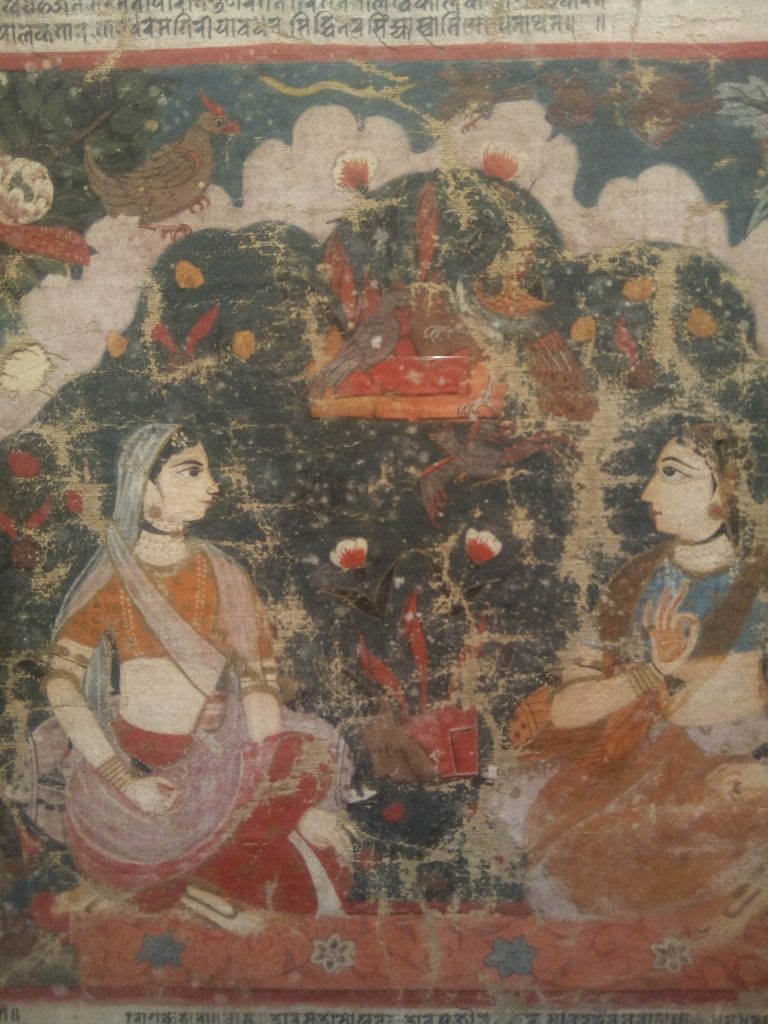 There is mention of the serpent Kaliya whom Krishna vanquished (Kaliya Daman) twice, as are the cow herds settlement of Vrindavan and flowing through it the river Yamuna. Siegfried Lienhard points out that despite mentioning the river Yamuna, it is the main river and an essential element in Krishna legends. The artist has yet to use much imagery to depict this beautiful river, except in scene 23, song twenty-two. Beautiful Yamuna can be seen in a rectangular motif just below the two ascetic figures, and the waves can be seen with black wavy linear dark lines filled with little blue colour to depict water; figures of fishes and water birds can be seen along with several water plants( a lotus bud) in this case.
There is mention of the serpent Kaliya whom Krishna vanquished (Kaliya Daman) twice, as are the cow herds settlement of Vrindavan and flowing through it the river Yamuna. Siegfried Lienhard points out that despite mentioning the river Yamuna, it is the main river and an essential element in Krishna legends. The artist has yet to use much imagery to depict this beautiful river, except in scene 23, song twenty-two. Beautiful Yamuna can be seen in a rectangular motif just below the two ascetic figures, and the waves can be seen with black wavy linear dark lines filled with little blue colour to depict water; figures of fishes and water birds can be seen along with several water plants( a lotus bud) in this case.
Interestingly, the poems composed before this Krishnalila painting are songs with different Ragas. Ragas have been the core part of Indian classical music, and along with tala, they are used to compose music for different seasons, which also talks mystically of different emotions evoked through these Ragas. As for Ragamala paintings from Rajasthan and Pahadi miniatures, the artists have created Ragaputras (sons) and Ragaputris (daughters), then further they have wives of Putras and daughters and sons, it becomes a complete elaboration of the Ragamala family. It is complex to identify each with different iconography. The raga and tala recommended for musical presentations are mentioned at the beginning of each song in the Krishnalila painting from Lalitpur. Whereas the name of each raga, as well as the word raga itself, is written in full, the name of the rhythm is generally given in abbreviated form and without the word tala. A comparison between various sources shows that the same raga is almost always prescribed for the same song, although the rhythm frequently differs from manuscript to manuscript.
This Article is the second part of research on 17th Century Krishna Leela’s painting; it illustrates the text of devotional songs, a genre known as Krishnalila. The first part of this Article: The Hidden Metaphors in the 17th Century Krishna Leela Painting from Nepal
Five instruments accompanied by the singers, as pointed out by Siegfried (page 55), are Khim (a two-headed drum played with both hands, jail, a pair of small thick-walled and plate-shaped cymbals, the at tala, a pair of small thick-walled cymbals, the pragma (also ponga), a copper tramper supported by a stick and the hand harmonium, imported into Indian and Nepal from Germany towards the end of the 19th century and much used for religious music.
5) THE UNKNOWN ARTIST’S IMAGINATION BEYOND VISUALS AND HIS INTERPLAY OF VISUALS IMAGERY WITH 31 OUT OF 36 SONGS BY SIDDHINARSIMHA MALLA.
First of all, the persons depicted in the scenes:
Krishna, Gopis, Shiva, Gauri, King Siddhinarsimha Malla, Bhanumati, kings consort, Two courtiers, Two of Shiva’s servants, Two sadhus, Two servants of the sadhus, Two herdsmen(or holy men).
The order of the scenes-
1) King Siddhinarsimha Malla pays homage to Pashupati Shiva and Parvati.
2) King Siddhinarsimha Malla and Queen Bhanumati visit Krishna, who is
playing his flute.
3) Three Gopis conversing
4) Conversation between four Gopis
5) Krishna and a gopi in an amorous situation
6) Two Gopis in conversation
7) Two Gopis in conversation
8) Two gopi in conversation
9) A lovesick gopi with her companion gopi.
10) A gopi seeks out the flute-playing cowherd-deity
11) A gopi conversing with Krishna.
12) Two Gopis in conversation
13) Two Gopis in conversation
14) Krishna conversing with a gopi
15) Two Gopis in conversation
16) Flanked by two Gopis, Krishna plays his flute
17) Two Gopis in conversation
18) Conversation between Krishna and a gopi
19) Two gopi in conversation
20) A lovesick gopi tended by three confidantes
21) Two Gopis in conversation
22) Krishna and three Gopis celebrate the spring festival of Holi
23) Two sadhus
24) Two Gopis conversing
25) A gopi approaches Krishna
26) Three Gopis attend a lovesick Gopi
27) Krishna withdraws from three Gopis
28) Two Gopis in conversation beside two men who are leaving the scenes
29) Krishna and Balaram? (Using the exact figure with different gestures to show movement is a critical feature frequently used in Rajsthani and Pahadi paintings).
30) Krishna in conversation with Gopis
31) A Gopi worships Krishna.
This Article is the second part of research on 17th Century Krishna Leela’s painting; it illustrates the text of devotional songs, a genre known as Krishnalila. The first part of this Article: The Hidden Metaphors in the 17th Century Krishna Leela Painting from Nepal
Siegfried defines each scene according to the narration in 31 songs, along with the depiction of each seen from the visual imagery in the painting. It is fantastically described elaborately, with the changes in the background, the gestures, the postures, the movement it holds, the expressions created by each figure and the details of clothing, environment and division. What is missing is a visual eye, a perspective which narrates the scenes through the eyes and brush of the artist. One fundamental flaw with this painting is that the artist is unknown. Starting right from the division of each column which either takes the shape of a shrine or mountains in the background(in the latter case, Pahadi painters were fluent in adopting a mountainous environment for every famous manuscript painting). The lack of a regional touch often makes the artist a mere craftsman and restricts him from imagination.
The Mughal style of garment worn by most figures depicts the popular fashion of 17th-century Nepal. Perhaps what stroked me the most was the stylization of two figures in scene one and scene 16(the middle scene, where Krishna is painted as Venugopala, stands as a deity, this image being the central image of the whole painting declares this painting to be an illuminated one. The images of Pashupatinath and Venugopala are drawn very much like a traditional Tibetan deity; large eyes, the flow of cloth and the facial features let the painting be influenced by Tibetan style. The second influence of style noticeable is the Pala manuscript of Bengal, which can be seen in the compartmentalization of each scene. A very Mughal element that seemed prominent in each scene is the depiction of the central figure as more significant than the other principal figures. Hamzanama’s painting of Mughal miniatures shows this kind of hierarchical depiction of the leading figures throughout the paintings. A tiny Jain element can be seen in the depiction of eyes, only possible if one separates each scene and observes. In most scenes where Krishna converses with other Gopis, he is portrayed as a human being (an everyday lover) dressed as a court person. Though the females wear very prominent Mughal-style garments (also males are in Chaakdar transparent JAMA, khaddar parade and just), a touch of traditional Nepalese jewellery can be seen; what stroked me the most is that their gestures and ways of sitting and standing are very much like Maithili art (could have been inspired née the folklores of Maithili region Bihar).
The trees act as part ion between scenes; the essential aesthetical elements are flora and fauna used everywhere in the entire painting; this would have been possible because all the scenes are set up in Vrindavan. The artist has not stopped himself from giving a regional touch to the painting; Siegfried points out that though Rajasthani miniatures inspire the flora, I feel plants and trees of this type are also found in Nepal. Very detailed forms of birds and animals (monkeys) can be seen throughout the painting to make it livelier; few of these birds look artist’s imagination.
One thing to note in the first poem; it begins with a particular reference to Pashupatinath Shiva. At the end of each song, the poet praises the lord of Siddhinarsimha Malla, clearly defining him as the beginning and the end. The speaker wants the follower to trust and follow Lord Krishna without losing faith.
The last poem ends with an ‘aarti’ to Krishna. Like all intellectual kings, Siddhinarsimha Malla left his legacy and noble ship in the form of his poetries and painting.
6) CONCLUSION AND FURTHER RESEARCH PLAN
It was a short time to work on this complete painting, not just a painting. It holds complete diversity in a place’s culture.
As an art history student, I have learned to categorise my research and plan my methodologies. However, the best thing I learned is that there are two types my people in art history, one who collects facts and figures and documents them to create a detailed historical background. At the same time, the second category of writers and historians collect this information and look beyond the written words and visual forms. The second act requires a process of deep submission to the artwork; it will take you back in time to those days when the artists of that particular artwork were holding the original ideas to create it. Now, I want to be the second kind of writer, and regarding this Krishnalila painting, I got so fascinated by it right from the first day that I wanted to travel back in time. Lack of time has not fulfilled my wish. I am grateful and relied mainly on the material provided to me by the museum. Moreover, in future, I would like to extend this time travel into the ocean of Krishnalila painting. Till now, I have been able to touch the basics of this extraordinary painting, but there is so much left to learn and understand.
8) REFERENCES-
1) NEPALI PAINTING- MADAN CHITRAKAR
2) THE DIVINE PLAY OF LORD KRISHNA, SIEGFRIED LIENHARD (a Krishnalila painting from Nepal), 1995, VGH Wissenschaftsverlag.Bonn
3) PATAN MUSUEM GUIDE.
4) DELIGHTING IN THE DELIGHTFUL; THE AESTHEITICS OF GITA GOVINDA AND THE ODISSI Danced. Itishree Devi
5) CHAPTER THREE, STUDY OF NAYIKA BHEDA, Rathore, 57.
6) WIKIPEDIA THE ENCYCLOPEDIA.
7) SHRI KRISHNA MANDIR CONSERVATION PROJECT, article by JAGADISH RANA.

